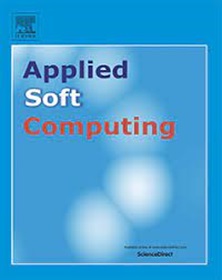基于最远点优化和多目标策略的蚁群优化算法在机器人路径规划中的应用
IF 6.6
1区 计算机科学
Q1 COMPUTER SCIENCE, ARTIFICIAL INTELLIGENCE
引用次数: 0
摘要
随着高科技的不断发展和智能产业的不断进步,移动机器人逐渐广泛应用于各个领域。在移动机器人研究领域,路径规划至关重要。然而,目前应用于移动机器人路径规划的蚁群优化算法仍存在一些局限性,如早期盲搜索、收敛速度较慢、路径平滑度较低等。为了克服这些问题,本文提出了一种基于最远点优化和多目标策略的蚁群优化算法。该算法引入了新的启发式信息,如正态分布模型、三角形不等式原理、平滑度函数、安全值函数等。它采用多目标综合评价指标来判断路径的质量。对于优质路径和劣质路径,算法会采取额外的信息素增量和信息素浓度减量来加快算法的收敛速度。此外,该算法还采用了最远点优化策略,以进一步提高路径质量。最后,为了验证算法的有效性,该算法与现有的 20 种解决机器人路径规划问题的方法进行了比较,实验结果表明,该算法在收敛性、最优路径长度和平滑度方面都表现出了更好的效果。具体来说,该算法可以在四种不同环境下生成最短路径,同时实现最少的转弯次数,收敛速度更快,进一步证明了本文改进算法的有效性。本文章由计算机程序翻译,如有差异,请以英文原文为准。
Application of ant colony optimization algorithm based on farthest point optimization and multi-objective strategy in robot path planning
With the continuous development of high technology and the continuous progress of intelligent industry, mobile robots are gradually widely used in various fields. In the field of mobile robot research, path planning is crucial. However, the current ant colony optimization algorithm applied to mobile robot path planning still has some limitations, such as early blind search, slower convergence speed, and lower path smoothness. To overcome these problems, this paper proposes an ant colony optimization algorithm based on farthest point optimization and multi-objective strategy. The algorithm introduces new heuristic information such as the normal distribution model, triangle inequality principle, smoothness function, safety value function, etc. It adopts multi-objective comprehensive evaluation indexes to judge the quality of paths. For the high-quality and poor-quality paths, the algorithm takes additional pheromone increments and decrements in pheromone concentration to speed up the algorithm’s convergence. Besides, the farthest point optimization strategy is used to improve the quality of the paths further. Finally, to verify the algorithm’s effectiveness, the algorithm is compared with 20 existing methods for solving the robot path planning problem, and the experimental results show that the algorithm exhibits better results in terms of convergence, optimal path length, and smoothness. Specifically, the algorithm can produce the shortest path in four different environments while realizing the least number of turns with faster convergence, further proving the effectiveness of the improved algorithm in this paper.
求助全文
通过发布文献求助,成功后即可免费获取论文全文。
去求助
来源期刊

Applied Soft Computing
工程技术-计算机:跨学科应用
CiteScore
15.80
自引率
6.90%
发文量
874
审稿时长
10.9 months
期刊介绍:
Applied Soft Computing is an international journal promoting an integrated view of soft computing to solve real life problems.The focus is to publish the highest quality research in application and convergence of the areas of Fuzzy Logic, Neural Networks, Evolutionary Computing, Rough Sets and other similar techniques to address real world complexities.
Applied Soft Computing is a rolling publication: articles are published as soon as the editor-in-chief has accepted them. Therefore, the web site will continuously be updated with new articles and the publication time will be short.
 求助内容:
求助内容: 应助结果提醒方式:
应助结果提醒方式:


